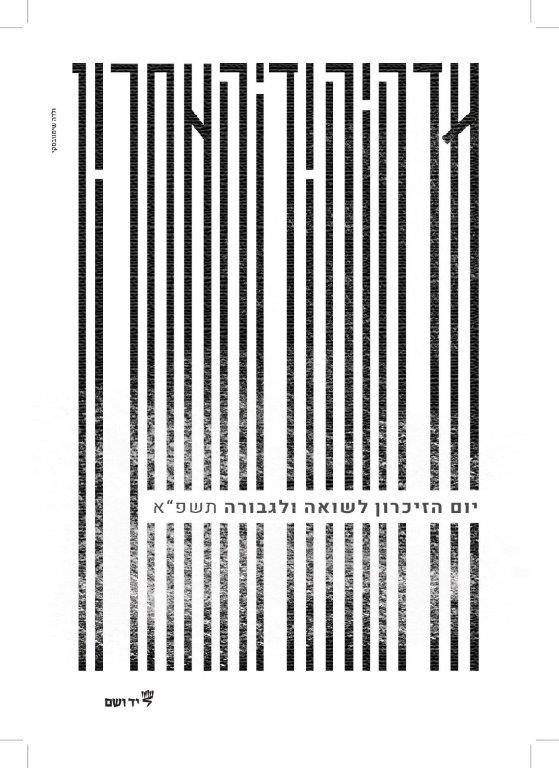18 March 2021
For over a decade, Yad Vashem has been conducting an annual competition to design the official poster to accompany Holocaust Martyrs' and Heroes' Remembrance Day activities. This year, participants across Israel were asked to create a poster relating to the annual theme for Holocaust Remembrance Day 2021, "Until the Very Last Jew: Eighty Years Since the Onset of Mass Annihilation."
This year's winner, Vlada Shimanovsky, sought to capture the effects of dehumanization, which Jews experienced throughout the Holocaust. Shimanovsky employed the idea of a barcode, starting the design with the Hebrew letters that make up the phrase "Until the Very Last Jew," at the top. This contrasts with a regular barcode, which contains numbers (information) at the bottom. The poster calls out to humanity to search for, learn about, and remember the victims of the Holocaust.
Shimanovsky, 33, from Rishon Lezion, holds a master's degree in molecular biology from Bar-Ilan University. She immigrated to Israel from Ukraine in 1996 with her late mother, Margarita. Her late grandfather, Nussin Dayan, z"l, a Holocaust survivor, was interned together with his extended family in the Zmarinka ghetto in Ukraine during the war.
"I congratulate the winning designer for her inventive and complex creation," remarked Acting Chairman of Yad Vashem Ronen Plot. "Like the winning designs of previous years, this poster will be used to educate and pass on the legacy of the Shoah to younger generations, through the use of visual and artistic expression in addition to more commonly used methods."
Judges Rationale:
"The artistic use of the phrase 'Until the Very Last Jew' conveys the fading of images and memory over the course of time. The Hebrew letters extend downwards, becoming dense lines simulating a fence, a forest of tall trees, or a barcode. This is reminiscent of the various ways the extermination was carried out, until it reached its final stage – industrial murder in the death camps. The visual minimalism of the poster and its characteristics reflect the difficulty in verbally describing the story of the Holocaust, and the challenge of preserving its memory for future generations."







